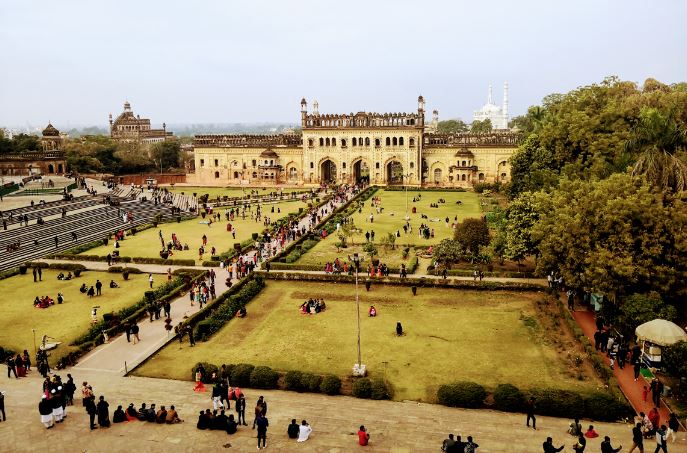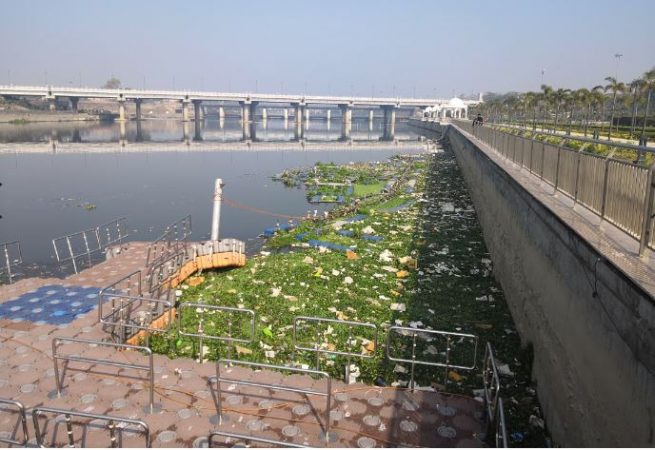

Lucknow needs to think water too
The Gomti river, in many ways the lifeline for the city of Lucknow, is today in deep coma, thanks to the many operations done on it in the name of riverfront. If it wasn’t insulting enough that a CBI enquiry is currently pursuing reports of corruption and worse, the ‘development’ is also being ticketed for access, effective Jan 16, at Rs 10 per head. That tenner spent to get close to the river, should really make every visitor think about the whole riverfront redevelopment shenanigans.
Riverfront development has always been a touchy topic for environmentalists who rightly blame the concretisation it involves as a huge hit on river ecology. Binding the river within these concrete embankments also makes available areas for land development on what used to be floodplains, making the purpose of the whole exercise suspect to many people.
While the Sabarmati riverfront development in Ahmedabad is the most prominent example for us in India,even this involved diverting water from the Narmada canal into the Sabarmati to revive it. Widely showcased as a role model for other ‘city’ rivers , along with completely different cases like the Singapore river in Singapore, the Thames in London, the Siene in Paris, or even the Han river development in Seoul. Multiple efforts have been made since the Sabarmati ‘experiment’ to redevelop rivers in India. The Gomti, for want of a better word, is a victim of this trend.
Quite simply, based on our discussions with locals and affected people, the Gomti project never married the engineering and ecological aspects of development, unlike say the Thames restoration. Thus, a platform for water sports was created brainlessly, with no clear plans on viability and sustainance.
Water flowing into the river is still polluted,with plans to set up more STP’s, stuck. That meant, even visitors, were not really keen on cavorting in a river with dark, smelly water, or sewage in word.


It seems the development completely completely ignored an IIT Roorkee report . The Lucknow Development Authority (LDA), whose offices are visible from across the main entrance to the riverfront, sat on the report for years before passing the onus of the work to the irrigation department.
The report, among other things, had pushed for a river width not bless than 250 metres, to allow its banks to function normally in supporting its ecology.
The eventual version has the river narrowing to as little as 125 m in parts, to enable land reclamation and ‘development’ of the same.
Today, the river is one sad, slow moving dark stain, testimony to the foul depredations it has had to suffer. A saving grace is possibly the state of the ‘water sports platform’ , reduced to becoming an island of trash and water hyacinth, and the only place where we managed to spot something by way of some fauna, in the form of a snake and a water bird.
Authorities refuse to come on record with a prediction for when things could actually be closer to what was promised. With the stench of corruption on the whole project, one got the feeling that noone was really keen to do anything, including undoing the damage that has been done to the river.
The apathy is probably symptomatic of our attitudes to our critical water sources. In the same city, ever y single water body we saw, especially those in heritage monuments were in a state of neglect , making it very clear that the problem runs deeper, in a lack of respect and understanding for water itself.
1. The mandate for blending Compressed Biogas (CBG) with natural gas has come into effect…
Andhra Pradesh is striving towards greening its energy sector with quite some speed. In a…
With an objective to bolster India’s green energy goals, a Tripartite Agreement has been signed…
The Union MNRE Minister Pralhad Joshi launched the Green Hydrogen Certification Scheme of India (GHCI)…
India’s energy conglomerate Bharat Petroleum Corporation Limited (BPCL) has commissioned a 5MW green hydrogen plant…
In a historical development, the European Space Agency (ESA) has successfully launched its pioneering ‘Biomass’…